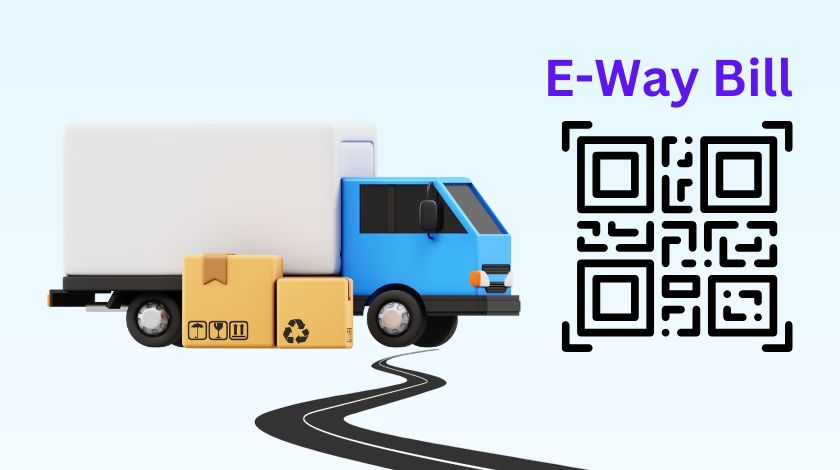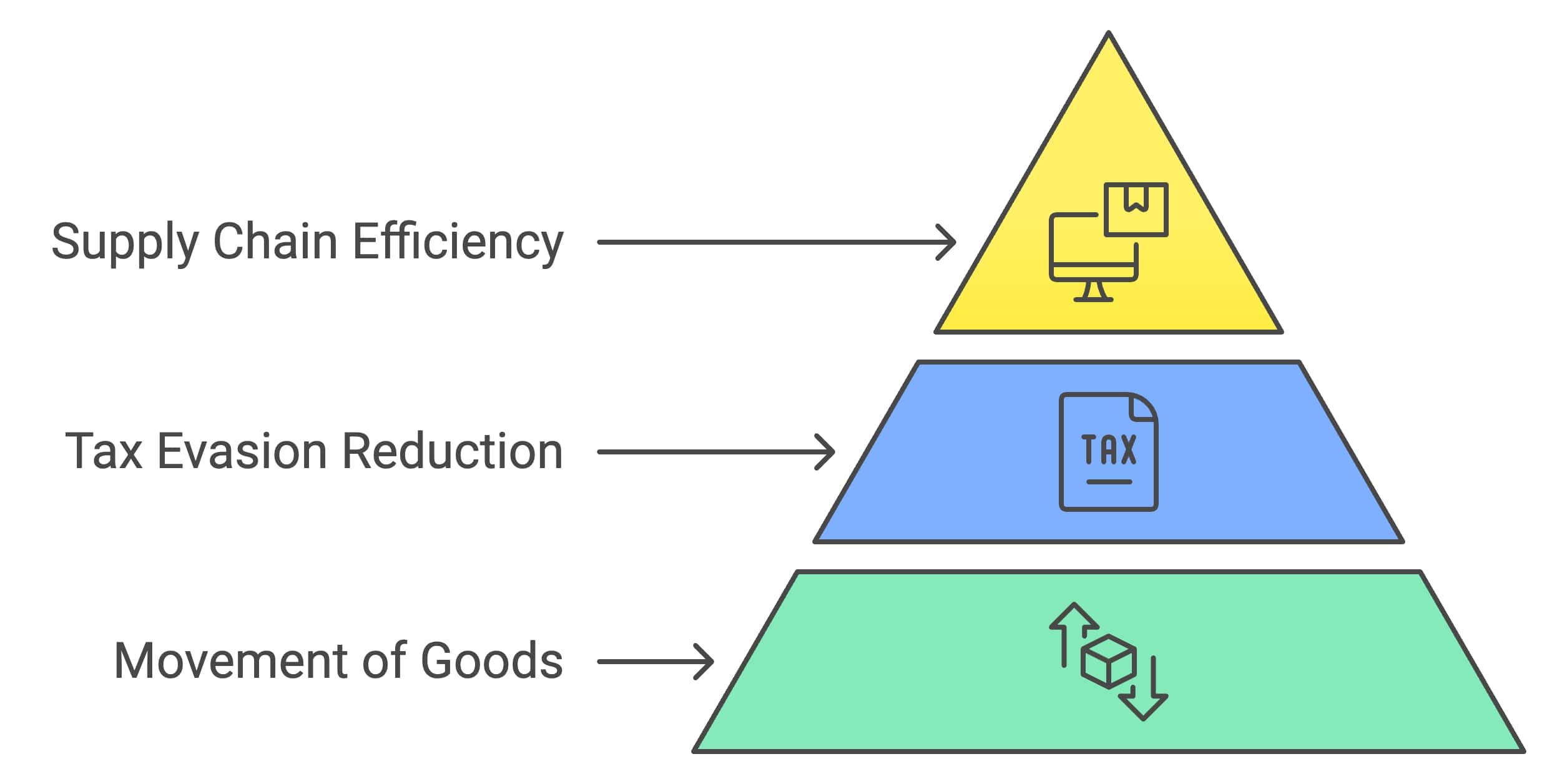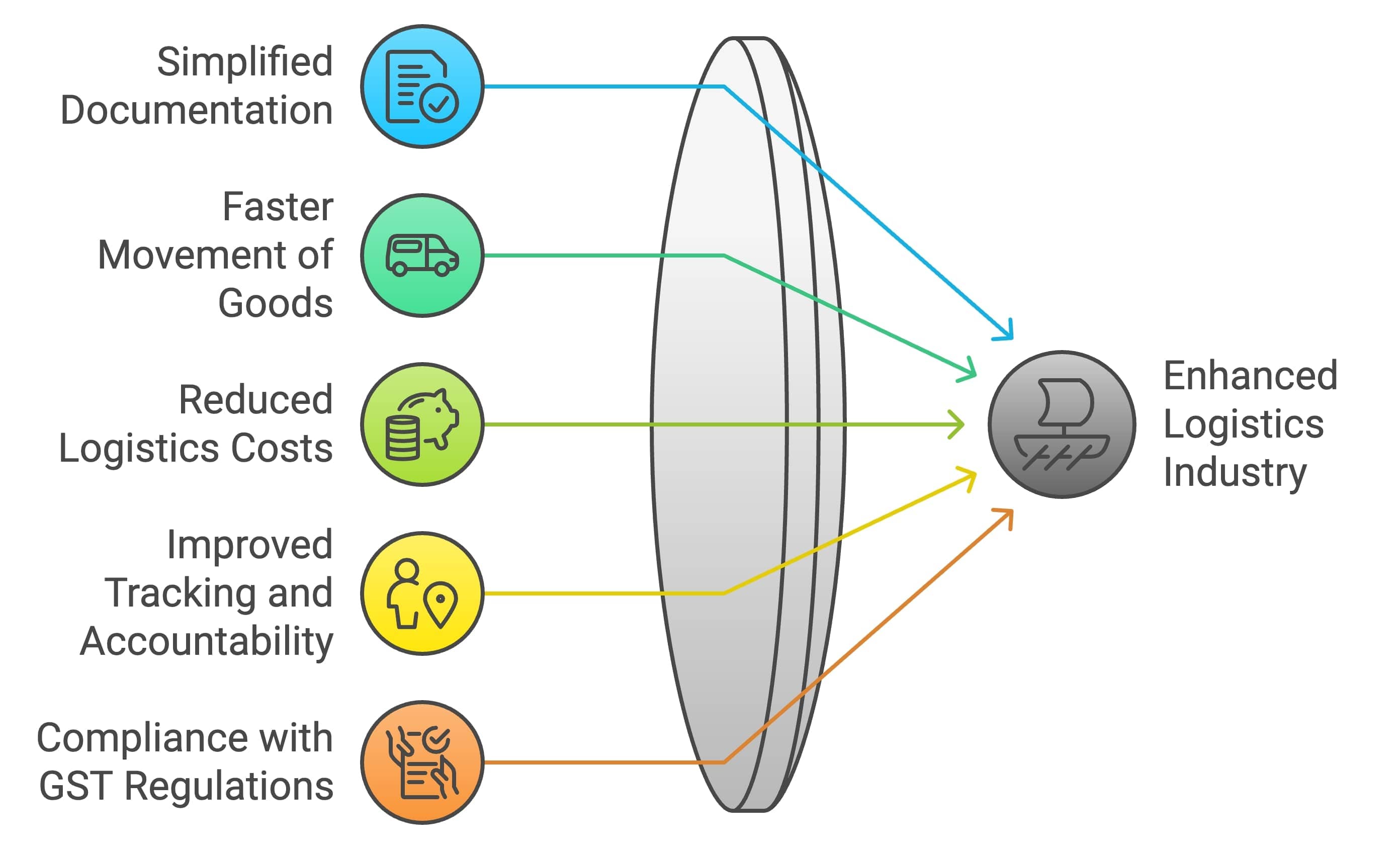E-Way Bill Guide: Key Insights & Compliance Tips

The purpose of this blog is to simplify the E-Way Bill system, offering key insights and compliance tips for businesses involved in the movement of goods. Whether you are a seasoned logistics professional or a business owner looking to understand the nuances of this regulatory requirement, this guide aims to provide a comprehensive understanding of what E-Way Bills are, why they are essential, and how to ensure seamless compliance.
E-way Bill Tax Charges Calculator
Results:
GST Payable: INR 0.00
Total Amount Payable: INR 0.00
What is an E-Way Bill?
An E-Way Bill, or Electronic Way Bill, is a mandatory document required for the transportation of goods worth more than a specified amount, usually ₹50,000, across state and intra-state borders in India.
The E-Way Bill system was introduced as part of the Goods and Services Tax (GST) reform implemented by the Government of India on July 1, 2017. It became mandatory nationwide on April 1, 2018. The legal basis for the E-Way Bill is provided under Section 68 of the Central Goods and Services Tax (CGST) Act, 2017, along with Rule 138 of the CGST Rules, 2017. These provisions mandate that an E-Way Bill must be generated for every consignment exceeding the specified value limit, ensuring that goods transported across the country are properly documented and taxed.
Key Components of an E-Way Bill
An E-Way Bill consists of several crucial components that collectively ensure the legality and traceability of the goods being transported. These components include:
- Unique E-Way Bill Number (EBN): This is a unique 12-digit number generated for each E-Way Bill and serves as the primary identifier for the document.
- Details of Consignment: Information about the goods being transported, including the HSN code, description, quantity, and value.
- Consignor and Consignee Information: Details of the supplier (consignor) and the recipient (consignee), including their GSTIN (Goods and Services Tax Identification Number), address, and contact information.
- Transporter Information: Details of the transporter, including the transporter ID, vehicle number, and mode of transport (road, rail, air, or ship).
- Validity Period: The validity period of the E-Way Bill, which varies based on the distance the goods need to be transported. Typically, it ranges from one day for distances up to 100 kilometers to additional days for longer distances.
- Date and Time of Generation: The exact date and time when the E-Way Bill was generated, ensuring the document is time-stamped and traceable.
Importance of the E-Way Bill in the Relocation Industry

By adopting the E-Way Bill system, the relocation industry can achieve greater efficiency, compliance, and customer satisfaction, ultimately enhancing overall operational effectiveness. Let’s delve deeper into the important factors:
1. Streamlining the Movement of Goods
- Efficient Documentation: The E-Way Bill system simplifies the documentation process, reducing the time and effort required to move goods.
- Reduced Delays: Electronic generation of documents minimizes delays at state borders, ensuring quicker relocation.
- Enhanced Reliability: Both relocation companies and clients benefit from faster, more reliable services.
2. Reducing Tax Evasion and Promoting Transparency
- Accurate Reporting: Ensures that all transported items are accurately reported and taxed according to GST regulations.
- Transparent Documentation: Creates a clear trail of documentation that can be easily audited, ensuring compliance with legal requirements.
- Building Trust: Clients gain confidence knowing their goods are moved legally and transparently.
3. Enhancing Supply Chain Efficiency
- Standardized Process: Provides a standardized method of documentation, reducing errors and discrepancies.
- Smooth Coordination: Improves coordination between movers, transporters, and clients, leading to smoother operations.
- Real-Time Tracking: Allows for real-time tracking of goods, enabling better resource management and planning.
- Optimized Operations: Helps relocation companies reduce transit times and improve customer satisfaction by ensuring timely and intact delivery of goods.
Benefits of the E-Way Bill System

The E-Way Bill system significantly enhances the efficiency, effectiveness, and reliability of the logistics industry, making it more competitive and customer-friendly. Let us explore the benefits in-depth.
1. Simplified Documentation Process
- Electronic Management: Eliminates the need for cumbersome paperwork through electronic generation and management.
- Reduced Errors: Streamlines the process, reducing administrative burdens and errors.
- Easy Audits: Ensures all necessary information is accurately captured and readily accessible for audits and inspections.
2. Faster Movement of Goods
- Expedited Checks: Accelerates goods movement by expediting checks at state borders.
- Improved Delivery Schedules: Reduces transit times, enhancing overall supply chain performance.
- Customer Satisfaction: Enables businesses to meet customer demands promptly with faster deliveries.
3. Reduced Logistics Costs
- Lower Transit Costs: Faster movement of goods reduces time spent in transit, lowering fuel and labor costs.
- Minimized Administrative Expenses: Streamlined documentation process cuts down administrative expenses.
- Avoidance of Penalties: Reduces the risk of fines and penalties associated with non-compliance, optimizing overall logistics costs.
4. Improved Tracking and Accountability
- Real-Time Tracking: Unique identification numbers for E-Way Bills allow for real-time tracking of goods.
- Enhanced Visibility: Greater visibility and traceability throughout the supply chain.
- Increased Security: Prevents theft and loss, ensuring greater accountability and securing the supply chain.
5. Compliance with GST Regulations
- Avoid Legal Issues: Ensures all transported goods are accompanied by a valid E-Way Bill, avoiding penalties and legal complications.
- Promotes Transparency: Fosters a culture of compliance by adhering to tax laws.
- Simplifies Audits: Makes the auditing process easier with organized and readily available documentation.
How to Generate an E-Way Bill
Generating an E-Way Bill is a simple process that can be completed online through the GST Network (GSTN) portal by following these steps:
1. Login to the E-Way Bill Portal:
- Visit the official E-Way Bill portal (ewaybillgst.gov.in).
- Use your GSTIN and password to log in to the portal.
- Select the 'Generate New' Option.
2. Fill in the Required Details:
- Transaction Type: Select whether the transaction is 'Outward' or 'Inward'.
- Sub-Type: Choose the appropriate sub-type, such as 'Supply', 'Export', 'Job Work', etc.
- Document Details: Enter the invoice or bill number and date.
- From/To Details: Fill in the details of the supplier (From) and recipient (To), including GSTIN, name, and address.
- Item Details: Provide details about the goods being transported, such as product name, description, HSN code, quantity, unit, and value.
3. Transporter Details:
- Mode of Transport: Select the mode of transport (Road, Rail, Air, or Ship).
- Transporter ID: Enter the Transporter ID, if applicable.
- Vehicle Number: Provide the vehicle number for road transport.
4. Submit and Generate E-Way Bill:
- Review all the entered details for accuracy.
- Click on 'Submit' to generate the E-Way Bill.
- The system will generate a unique E-Way Bill Number (EBN) and a QR code.
5. Print and Share:
- Print the E-Way Bill and share it with the transporter and the recipient.
- Ensure that the E-Way Bill accompanies the consignment during transit.
We know it's quite hectic if you are planning to relocate. Just hire packers and movers from AssureShift and they will take care of the rest.
Embrace E-Way Bills for Smooth and Compliant Logistics
In this blog, we have explored the E-Way Bill system in detail, covering its definition, legal framework, and key components. We discussed its importance in the relocation industry, highlighting how it streamlines the movement of goods, reduces tax evasion, promotes transparency, and enhances supply chain efficiency. Additionally, we outlined the benefits of the E-Way Bill system, such as simplified documentation, faster goods movement, reduced logistics costs, improved tracking, and compliance with GST regulations. We also provided a step-by-step guide on how to generate an E-Way Bill, including the required documents and information, and discussed various online portals and tools available for E-Way Bill generation.
As the logistics and transportation landscape evolves, it is vital for businesses to stay informed about the latest regulatory changes and updates related to the E-Way Bill system. Regularly reviewing and updating compliance practices will help businesses avoid legal complications and enhance their operational efficiency.
In conclusion, the E-Way Bill system is a powerful tool that offers numerous benefits to the logistics industry. By embracing this system and ensuring compliance, businesses can streamline their operations, reduce costs, and achieve greater transparency and accountability. Stay informed, stay compliant, and leverage the E-Way Bill system to drive your business forward.